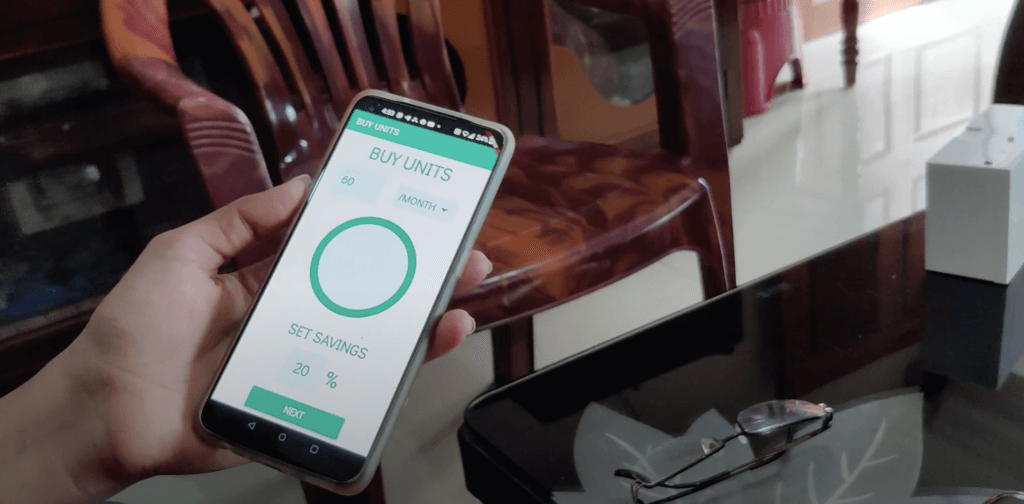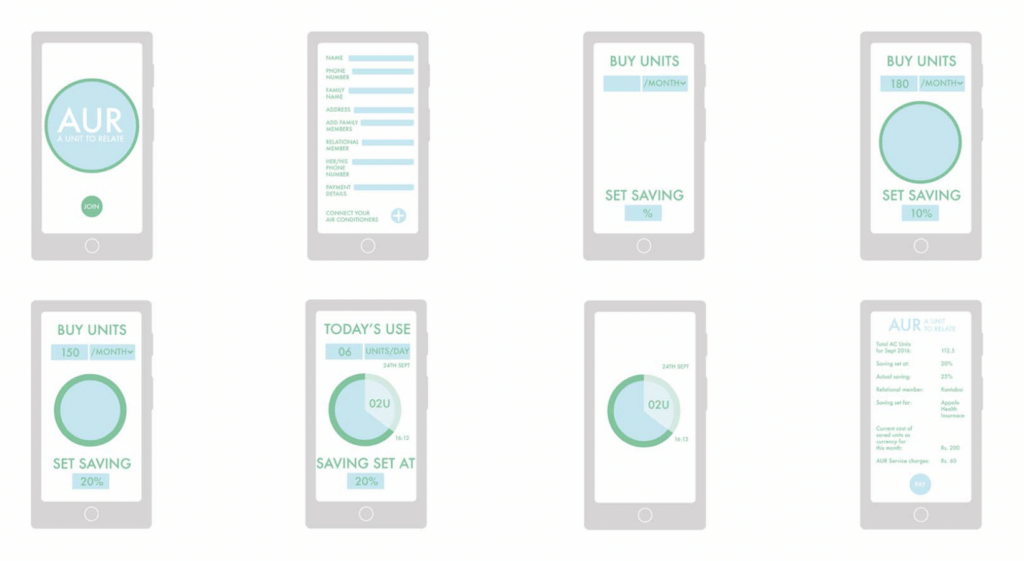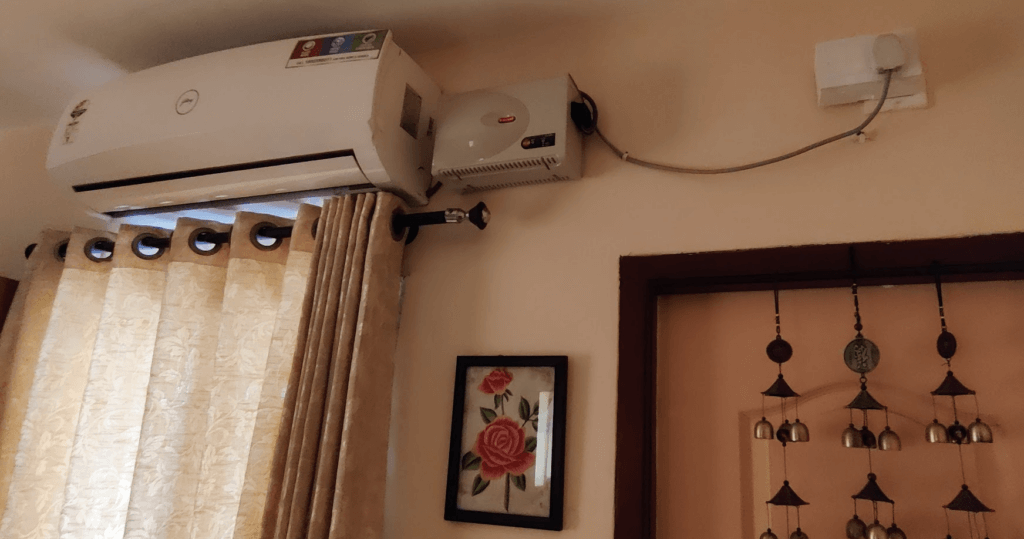- Service design prototype of a pre-paid air conditioning for domestic environments service using automation
- Provisions health insurance for domestic workers using energy savings from air conditioning
- Addresses social disparity within South Asian homes
- Access related IEEE publication from Global IoT Summit: Here

“Aur” (और) in Hindi can mean ‘more’, and it also means the ‘other’. In this ongoing project it is an acronym for ‘A Unit to Relate’. This project is an IoT based new energy concept and prototype as a product service system for residential contexts of urban India. The service as demand side energy management regulates domestic air conditioning energy use through pre-paid measures, automation and flexible capacity for generating savings up to 20%. From this pool of savings, the service extends into an alternative offering to its middle and upper middle class home owners, addressing a particular concern of social disparity, that which concerns their domestic workers. The cost from the energy savings from the air conditioning service gets channeled to the health insurance of the domestic worker, who works at their homes. The project description and the related published article present the service components and the context of use based on survey results for the hybrid IoT service offering. With this the project is seeking the potential for combining energy savings and demand side management while provisioning social capital to customers for addressing social disparity within their homes.

AUR Concept Extension with Solar
Child care, home cleaning, elderly nursing, cooking meals, door delivery of daily home-cooked meals, a number of such “services” can be seen as existing and emerging catering to middle-class urban India, all remaining very personnel centric. Car drivers with mobile GPS, domestic maids loading and drying clothes from the washing machine, domestic security guards staring into closed circuit video streams and various service personnel working with everyday technologies, all in close proximity to their employers, yet at a large psychological, social and cultural distance. The porosity of the Indian domestic space to the deep exterior vagaries of status, class, caste and gender for the delivery and through the acceptance of various informal domestic services is well evident. The technologization of the domestic space seems not to have reduced this porosity, but instead the porosity can be seen as having evolved with the technologies and the growing economy in a reflexive way, one supporting the other, thereby retaining the distance. This is not only evidence of the disparity that exists within the urban Indian home but also the closeness and employer-employee relations seem to have evolved into some sort of myopia that does not evidence the large gap of the various forms of social disparity.

AUR: User Interface Design


Field Testing of AUR working prototype: UI and hardware module in an urban Indian home in 2022
This is an ongoing project where a working prototype as a minimal viable product has been developed and tested within three homes in the city of Udupi in South India. The prototype comprises of a mobile application that connects with a hardware unit which plugs into a socket that powers the air conditioner.
Design and Research Lead: Karthikeya Acharya
Hardware and Software Consultant: Chandrashekar Rao Kuthyar from Sangamone
Project Collaborators: Sangamone, Bangalore, India